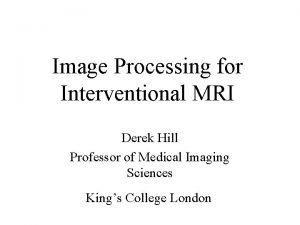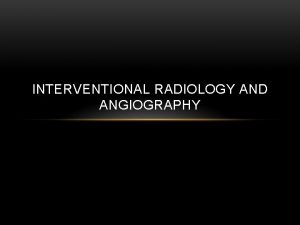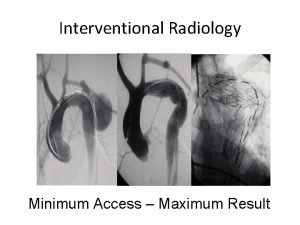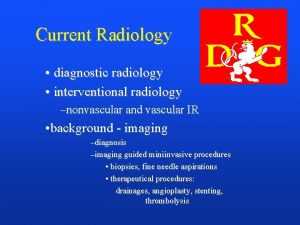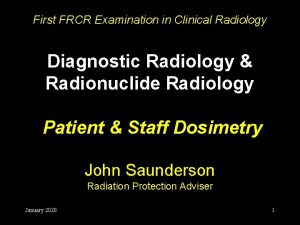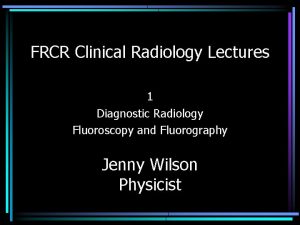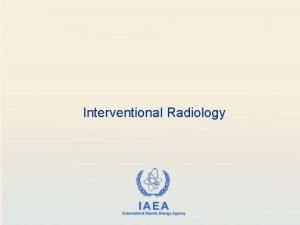THE POTENTIAL OF INTERVENTIONAL RADIOLOGY The Clinical and











- Slides: 11

THE POTENTIAL OF INTERVENTIONAL RADIOLOGY The Clinical and Economic Value of an IR Practice

2 IR Is Modern Medicine • Through a tiny incision in the skin, interventional radiologists deliver precise, targeted treatment • Life-threatening conditions — such as cardiovascular disease, stroke or cancer — are treated less invasively than traditional surgery • This often reduces risks, shortens recovery times and improves health outcomes

3 Achieve the Triple Aim • Improve the patient care experience — including quality and safety • Reduce the (per capita) cost of health care • Improve the health of populations

4 Less Is More IR enables you to deliver more quality care, less invasively, so you can: • Minimize risk to the patient • Shift care to less expensive outpatient settings • Increase patient throughput

5 Improve the Patient Experience Use of clinical IR procedures can: • Shorten recovery times • Enhance the patient experience • Improve health outcomes All key metrics promoted in alternative payment models

6 Improve Health of Underserved Can help extend resources to enable: Hospitals to provide more indigent care by using fewer hospital resources to reduce cost and maximize reimbursement under value-based payment models More low- and fixed-income patients to afford care by reducing cost of episodes of care (vs. open surgery, etc. ), thus reducing the dollar amount of patient co-payments, etc.

7 Poised for Growth • IR is expanding throughout health care — driven by the proliferation of minimally invasive therapies • IR has the potential to be a significant opportunity for hospital outpatient growth and cross-service line integration • Hospitals can leverage interventional oncology to take part in research opportunities, including the $1 billion Cancer Moonshot

8 Interventional Oncology Interventional oncology is poised for growth, driven by the proliferation of minimally invasive therapies — including: Percutaneous ablations using radiofrequency, cryotherapy or microwave Transcatheter therapies, including Y-90 radioembolization and chemoembolization MR-guided, high-intensity focused ultrasound and others

9 Collaborative Teams Interventional radiologists are integral members of patient care teams: • Team up with other specialists — delivering innovative solutions to today’s toughest medical problems • Maintain and foster developed relationships across departments in performing a wide array of procedures • Promote innovation and silo-busting that will benefit patients and the care delivery system

10 Longitudinal Care Interventional radiologists provide longitudinal patient care: • Participate actively in hospital acute setting and the outpatient setting • Provide treatment plans for patients • Follow up with patients and other physicians to monitor health and determine if the treatment plan is being administered effectively

11 IR Is a Primary Specialty • IR residency programs accept interventional and diagnostic radiology residents • Doctors who complete this training can be board certified in both diagnostic and interventional radiology • These steps will increase the current IR workforce to fuel clinical practices nationwide • Health systems can stay ahead of this curve by starting a clinical IR practice now
 Tipe investigasi dalam penelitian
Tipe investigasi dalam penelitian Porofessor overlay
Porofessor overlay Types of graded potentials
Types of graded potentials Equipotential lines
Equipotential lines Electrostatic potential difference
Electrostatic potential difference Water potential and osmotic potential
Water potential and osmotic potential Difference between sales potential and market potential
Difference between sales potential and market potential Electric potential
Electric potential Joules per coulumb
Joules per coulumb Joules to newtons
Joules to newtons Electrical potential
Electrical potential How to find pressure potential
How to find pressure potential

